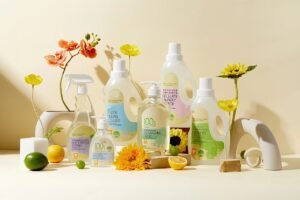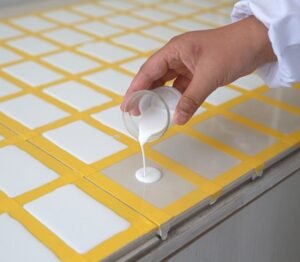In construction and infrastructure, enhancing concrete performance is critical. Faced with diverse engineering challenges, how does one select the most suitable reinforcing fiber? Henan Botai Chemical Building Materials Co., Ltd. (Botalchem) offers specialized solutions through its Calforce® series of engineered fibers. This article analyzes the unique advantages and applications of six fiber types: Embossed, Glass, Mesh, Monofilament, Twisted, and Waved, empowering informed material selection.
I. Core Properties and Applications of Six Fiber Types
| Fiber Type | Material | Key Properties | Typical Applications |
|---|---|---|---|
| Embossed | Polypropylene (PP) | Cost-effective, corrosion-resistant, easy dispersion, high flexural/tensile strength | Culvert support, natural terrain revetment, seawater-corrosion environments |
| Glass | Inorganic Mineral | Superior alkali resistance, high strength/modulus, low moisture absorption, heat/chemical resistance | Commercial/industrial slabs, pavements, precast elements (designed to resist Ca(OH)₂ corrosion in cement) |
| Mesh | Polypropylene (PP) | Self-dispersing into monofilaments, 3D chaotic support, enhanced toughness/abrasion resistance, stress reduction | Tunnel linings, mine walls, river embankments, military protective structures, quay revetments |
| Monofilament | Polypropylene (PP) | Micro-crack prevention, improved impermeability/impact resistance, freeze-thaw durability, fire performance | Roads/bridges/airport runways (high crack resistance); tunnel walls/reservoirs; seismic/fatigue-critical structures |
| Twisted | Polypropylene (PP) | High concrete gripping force, strength, excellent dispersion, rebar corrosion protection, abrasion resistance | Hydraulic structures (spillways/sluice gates), live-load applications (highway/railway bridges), seawater-exposed works |
| Waved | Polypropylene (PP) | Economical steel fiber alternative, corrosion resistance, operational ease, impact/abrasion resistance | Culverts, revetments; reservoirs/low-pressure pipes; high-velocity flow zones; seawater environments; live-load structures |
II. Key Selection Criteria: Matching Fibers to Engineering Demands
Crack Control & Toughness Enhancement:
Monofilament: Optimized for controlling plastic shrinkage micro-cracks throughout the concrete matrix. Ideal for slabs/pavements.
Mesh: Forms a three-dimensional chaotic support system post-dispersion, significantly improving impact/abrasion resistance. Recommended for dynamic-load structures (tunnels, revetments).
Glass: Engineered for alkali resistance, effectively mitigates plastic, thermal, and drying shrinkage cracks in thin sections (slabs, pavements).
Harsh Physical/Chemical Exposure:
Seawater/Freeze-Thaw: Embossed, Twisted, Waved PP fibers inherently resist corrosion, enhancing durability in marine/freeze-thaw cycles. Monofilament also excels here.
High-Velocity Flow/Severe Abrasion: Waved and Twisted fibers offer superior impact/abrasion resistance for hydraulic structures (spillways, sluices, stilling basins). Mesh fibers are equally suitable.
High Temperature/Chemical Exposure: Glass fibers provide exceptional heat/chemical resistance for industrial environments.
Cost Efficiency & Constructability:
Steel Fiber Replacement: Embossed and Waved fibers serve as economical alternatives, delivering comparable crack/toughness benefits without corrosion risk, mixer damage, or dispersion difficulties.
Dispersion: Twisted fibers ensure uniform distribution within concrete. All PP fibers are designed for easy dispersion.
Dynamic Loads & Structural Performance:
Live Loads (Traffic/Machinery): Twisted and Waved fibers are recommended for bridges, railways, and industrial floors due to high fracture toughness, tensile strength, and fatigue resistance.
Impact/Blast Resistance: Mesh fibers absorb significant impact energy, making them suitable for protective structures.
Rebar Protection/Durability: Twisted fibers reduce crack width, effectively shielding reinforcement from corrosion. All fibers enhance durability via crack mitigation.
III. Selection Guide: Aligning Requirements with Solutions
“Primary focus on micro-crack prevention?” → Choose Monofilament.
“Resisting high-velocity flow/severe abrasion?” → Select Waved or Twisted (Waved for cost efficiency).
“Seawater exposure/corrosion resistance?” → Embossed/Waved/Twisted PP fibers are applicable.
“Thin-section crack control (slabs/pavements)?” → Prioritize Glass Fiber (alkali-resistant grade).
“Demanding toughness/impact resistance (tunnels/revetments)?” → Opt for Mesh.
“Heavy cyclic loading (bridges/railways)?” → Select Twisted.
“Economical steel fiber alternative?” → Choose Embossed or Waved.
IV. Professional Recommendations
Custom Lengths: Fiber lengths are adjustable per project requirements (refer to TDS specifications).
Compliance: Dosage must adhere to design specifications and relevant standards.
Quality Verification: Consult Material Safety Data Sheets (MSDS) and conduct performance tests prior to use. Refer to Botalchem’s latest TDS for authoritative specifications.
Storage: Store all fibers in a cool, dry environment away from moisture.
Conclusion
Selecting the optimal engineered fiber is pivotal for enhancing concrete performance, ensuring structural durability/safety, and controlling project costs. The Calforce® series of polypropylene and alkali-resistant glass fibers provides robust solutions across civil engineering and construction applications. By understanding the unique properties of Embossed, Glass, Mesh, Monofilament, Twisted, and Waved fibers—whether targeting crack control, toughness, abrasion resistance, corrosion protection, or specialized loading—you can identify the ideal reinforcement partner. Consult qualified building material suppliers for detailed technical parameters and application guidance to establish a reliable foundation for your next project.



